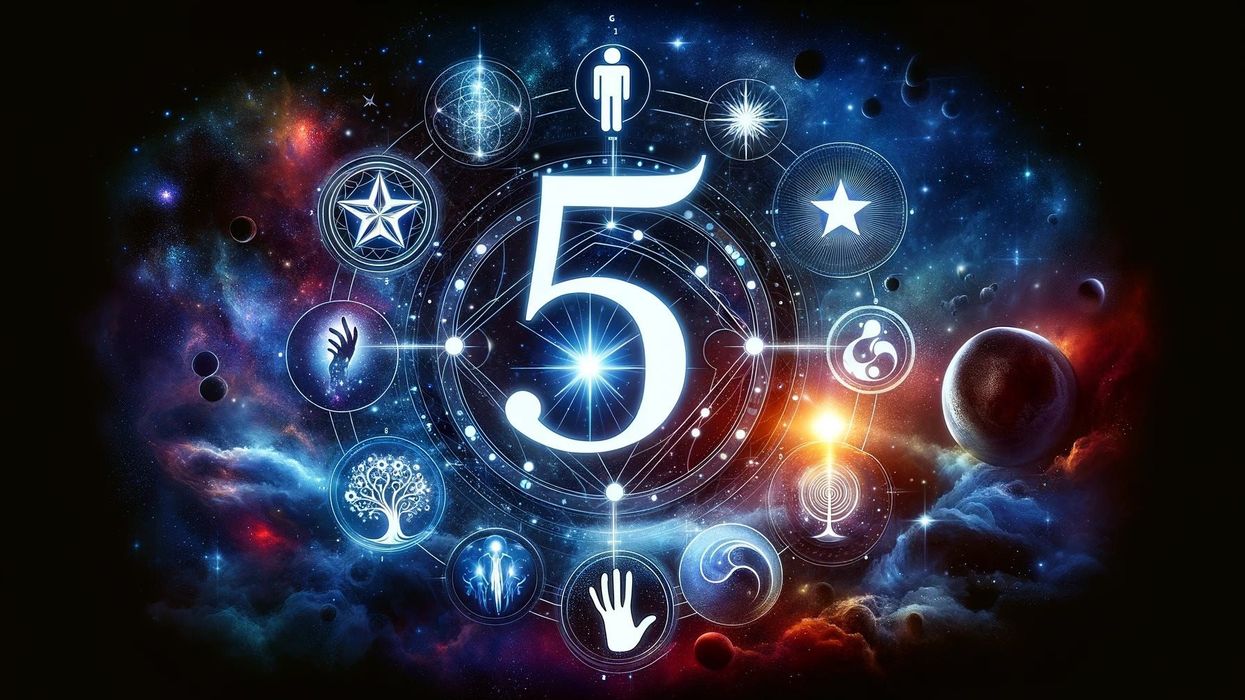The blue color is one of the most common colors that exist on the Earth, be it blue oceans or crystal blue skies.
The color blue not only symbolizes life on this planet but is also a color of calmness. The color was one of the last colors that came into use in various decorations and arts.
As this color is a major source of well-being and calmness, due to its sense of purity, it was later included in the areas which dealt with language as well as literature.
Be it the blue moon, blue light, a blue ribbon, blue background color, or a blue food product, the color blue is one of the most common colors around us. The color blue is also one of the primary colors along with red and yellow.
Reds, blacks, browns, and ochres are found in cave paintings from the Upper Paleolithic period, but not blue, not even as a background color. Making good quality blue dyes was considered a difficult task, which eventually resulted in its absence from usage in coloring or dyeing fabrics in earlier periods.
Colors that were highly pigmented, which included colors such as shades of red and pink, were used for the purpose of dyeing fabrics. Then, as the times passed, the discovery of blue dyes was made. The first shade of blue that was discovered was indigo, which was extracted from plants. Gradually, blue pigments were developed from minerals.
Some of the most popular shades of blue are deep indigo, deep sea blue, baby blue, turquoise blue, deep blue, and pure blue. Read on to know more about the utility of blue pigment and afterward, also check what color does pink and blue make and what color do you get when you mix red and blue?
Comparison Of Blue, Indigo, Violet, And Purple
Violet and indigo were ‘made up names’ given by Issac Newton to the rather difficult-to-see blues at the end of the rainbow spectrum.
These had not been given different names before, because they were just part of blue, but at the time, the early scientists had a bit of a mystic hangover about the importance of things being in sevens. As such, there were only five commonly named main colors, so he tagged indigo and violet to the end.
Each shade has its own sub-shades, that are, in a sense, somewhere resembling the original shade. The same goes with the color blue or light blue, it has its own variety of shades, and there are so many shades of blue that resemble the color so well.
Each and every shade of blue color is a symbol of something that exists on the planet. There are many shades of blue but there are three basic shades that exist, indigo, violet, and purple.
Do you know which color is popularly regarded and also known as the color of the visible spectrum? It is the color indigo.
It has a high significance in the history of humankind. The name of this color is an interesting fact itself! The name of this shade of blue has been derived from the Latin language but found its origins in India as well.
Indigo is very popularly known and has been given the recognition of a color in the visible light spectrum. The additional qualities of indigo include its presence in the rainbow.
Violet is another one of the prettiest shades of blue, although it resembles that color of light which is actually of a shorter wavelength. When compared to the colors of the visible spectrum, this color exists between the shades of blue and ultraviolet light.
Thereby, violet is recognized as one of the colors in the list of seven colors which was written by the great scientist Isaac Newton when he was in the process of dividing the spectrum of the light in the year 1672.
As pretty as the color itself is, the derivation of its name is actually from a beautiful flower. Yes, the name of this color was derived from the violet flower.
Did you know that the wavelength of blue light is short, as compared to red light?
Purple color is generally a mixture of shades of red and blue. This color is recognized as being the symbol of ambition, power, luxury, royalty, and often nobility.
Although in the world, we live in today, the existence of 'she' colors has not ended yet. The color purple is often referred to as one of the 'girl' colors as it is picked up mostly by women as one of the most likable colors and in the case of men, the percentage is comparatively low.
An interesting fact about color is that the difference between the shades is only a trick of the brain and not something that actually exists. When humans view color, they take in and subtract surrounding color in order to see the color of the object they are looking at.
Basically, the difference between shades exists because of the different wavelengths which they possess in the light spectrum. The colors that have a longer wavelength and a lower frequency will appear greener to the human eye.
Shades And Variations
Like every color, there are different shades of blue depending on the intensity of the hue but they are all still beautiful.
The variation and shade depend on certain features that include the colorfulness, tone, saturation, and lightness of the color.
When the color blue is mixed with comparatively large amounts of white it makes up a sky blue, also known as a baby blue color, which is known to be of a very soothing nature. The light blue color resembles the appearance of the sky.
Looking at darker shades of this primary color, the first notable shade is obviously indigo, which has played a major role in history as well in the form of indigo dyes. Then there is navy blue.
The name of this color was actually derived from dark blue itself but as there was a little difference in the tint, this shade was assigned a different name. The difference between navy and dark blue is in the amount of white used.
Its name is based on the fact that the color has been worn by the Royal Navy since the year 1748, hence, it is now known as navy blue. Dark blue, on the other hand, is usually associated with authority.
Did you know the term 'feeling blue' represents a lack of strong emotions and calm feelings?
There is another interesting variant of the color blue which is known as powder blue. It is a mix of a light shade of blue with a shade of green. This name was used in the English language in the year 1774.
Cobalt blue is yet another shade of blue and its name is derived from medieval miners who used to mine for cobalt.
Pigments And Dyes
Did you know that the color blue is often viewed as a symbol of fidelity? Blue is also said to be representative of faithfulness.
There is a custom where on the day of marriage, the girl who is getting married wears blue ribbons on her wedding day as they are believed to be a symbol of well-being.
Did you know that the first blue pigment that was found was azurite?
People living in Egypt made up a color named Egyptian blue and in no time it became very popular around the world.
As time passed by, there were advancements in the world of colors. As the world of chemistry advanced, there was a discovery of new blue pigments, the first being Prussian blue, and then, later on, there was the discovery of the color cobalt blue.
Physical Effects Of Blue
Blue color has a very significant effect on our mental health as it is a soothing color and it helps in bringing calmness to the mind. In the advertising industry, the color blue is often used for products that promote hygiene, air, or sky. This includes water purification products, airlines, minerals, and more.
Sometimes the color is associated with gloominess and sadness, and it is related to feelings of sadness as well. There is a belief that food served in blue-colored dishes seems to be less appetizing.
Experts often suggest serving your food on blue plates if you are trying to lose weight or serving blue foods to someone looking to lose weight!
Symbolism And The Meaning Of Blue
Did you know that pink is the symbol of tranquility? If you are someone who wears blue colors often, it can signify to people that you are someone who has a positive attitude, is loyal, and someone who has a positive attitude towards people.
The color blue is seen as a color of calmness and smoothness, and the color is also often associated with feelings of sadness gloominess, and darkness as well in some cultures.
As the color blue is the color of the sky, it is often referred to as a color that represents a stable human, serenity, and it is also a representative of health. Wisdom is another quality that is associated with the color blue.
The color blue often represents the calming nature that exists in the seas and the sky. This color can often be regarded as one of the most contrary colors in the spectrum for on one side it represents calmness and on the other side, it represents gloominess and sadness.
While blue eyes are regarded as one of the most beautiful, it is actually brown eyes that are most widespread across the world!
Here at Kidadl, we have carefully created lots of interesting family-friendly facts for everyone to enjoy! If you liked our suggestions for facts about the color blue then why not take a look at what color is cyan, or what color does blue and orange make?








